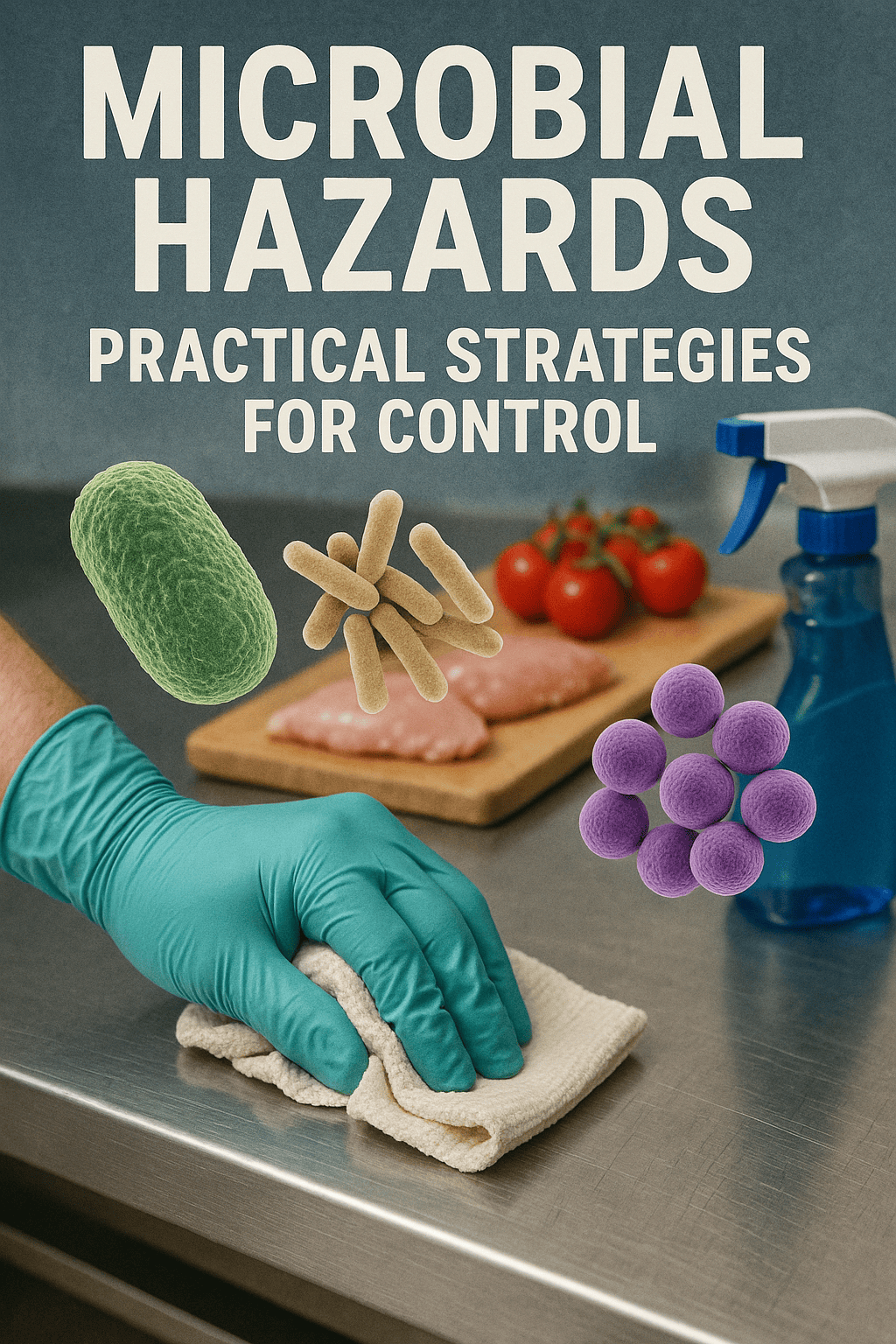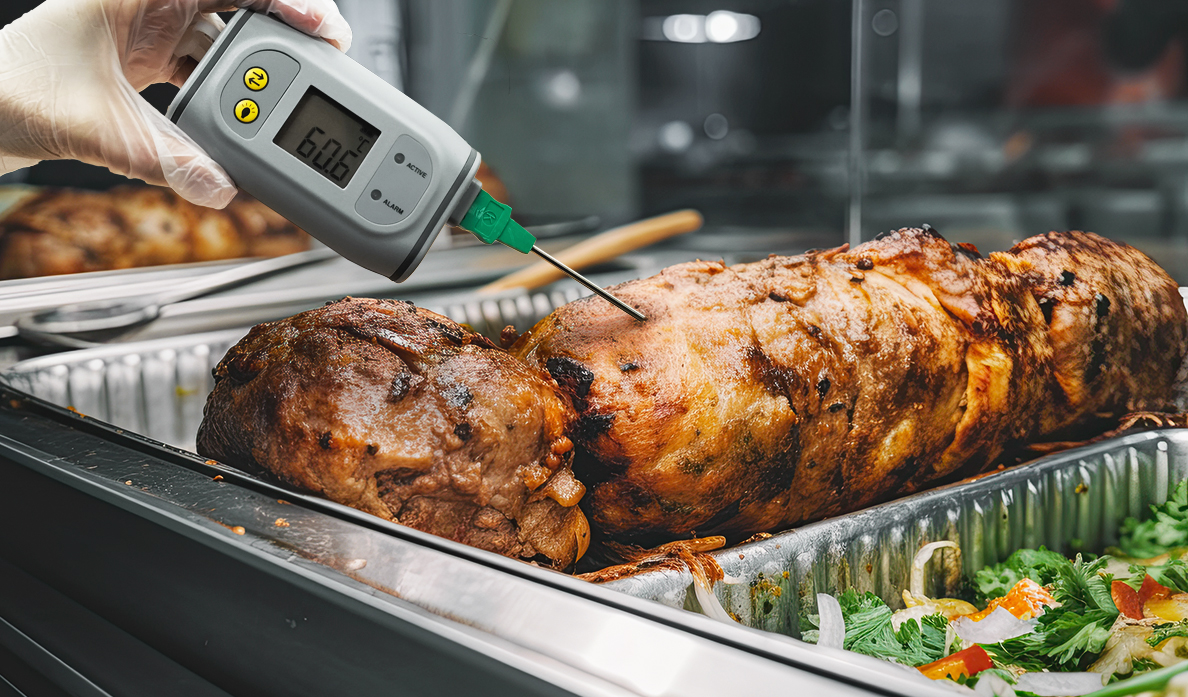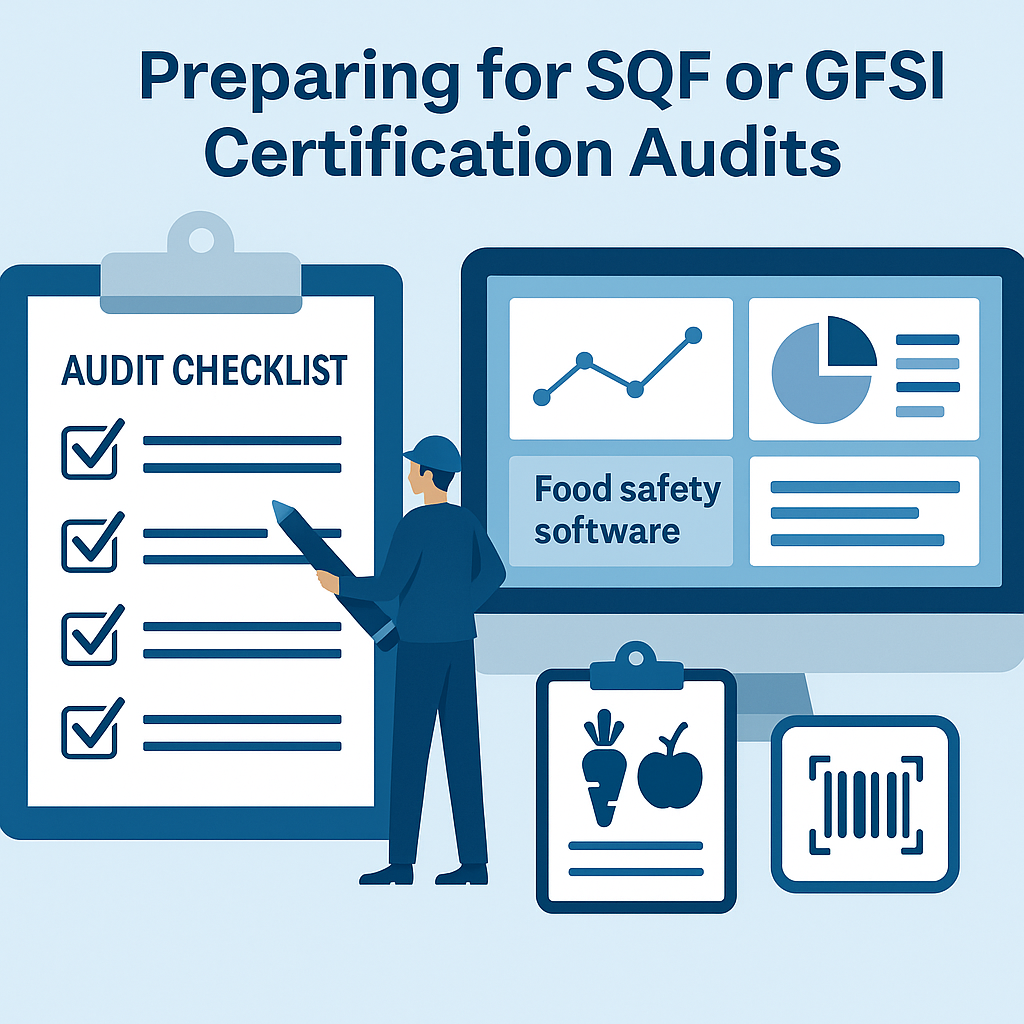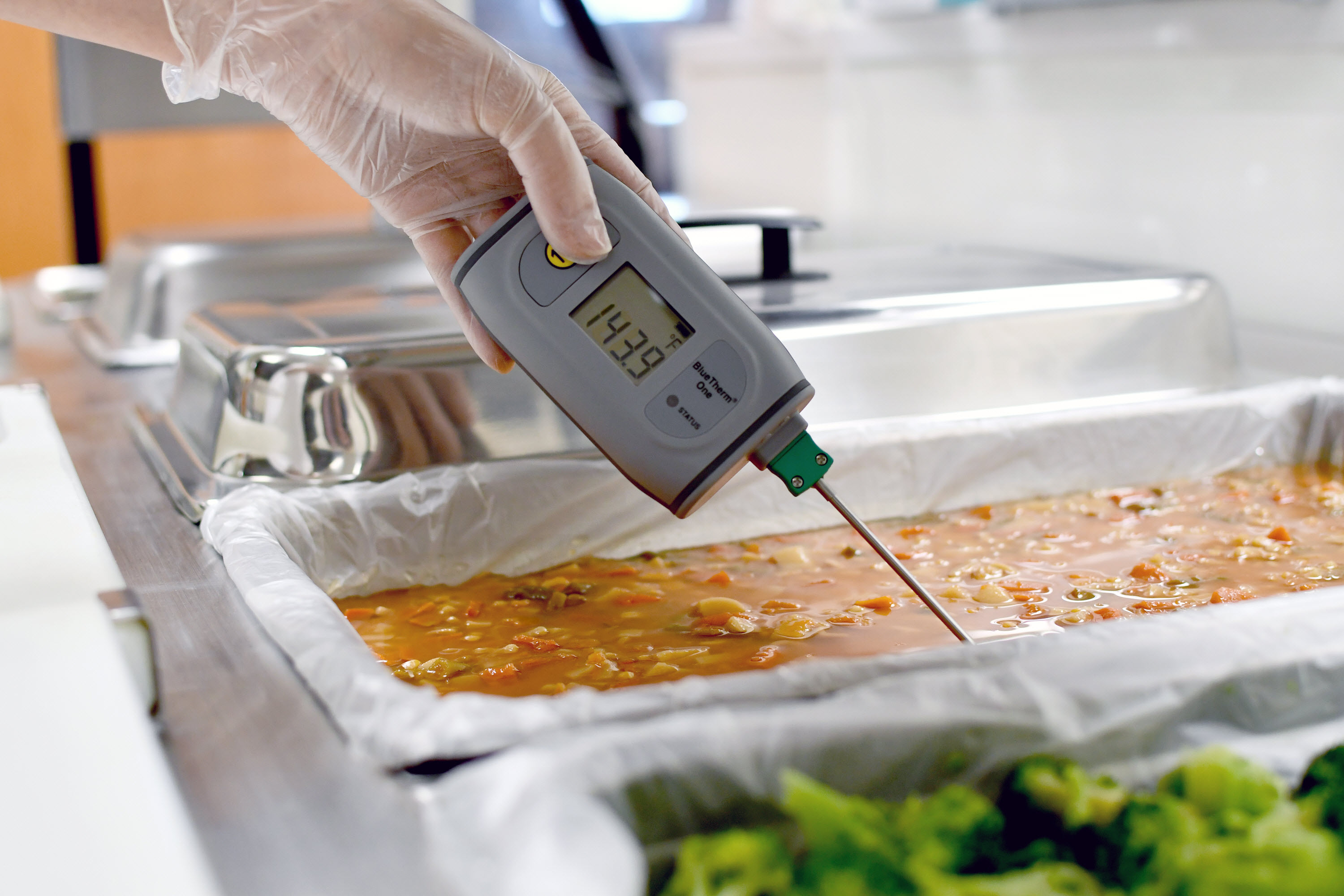In the rapidly evolving food industry, the landscape of food safety is being redefined. Small and medium-sized enterprises (SMEs) can no longer afford to manage food safety with outdated, manual processes. The integration of Internet of Things (IoT) and Artificial Intelligence (AI) into food safety software is not just an innovation—it's becoming a necessity.
As we step into 2025, SMEs that embrace digital transformation are not only ensuring compliance but also unlocking operational efficiency, real-time traceability, and predictive risk management. This blog will explore how IoT and AI are revolutionizing food safety, provide a step-by-step approach to adopting these technologies, and share real-world examples to guide SMEs on this journey.
Why Food Safety Needs a Technological Upgrade
The Growing Challenges
Food safety is under increasing scrutiny due to:
-
Stricter global regulations (CFIA, FDA FSMA, EU regulations)
-
Increased frequency of food recalls
-
Rising consumer awareness and demand for transparency
-
Complex global supply chains
Traditional paper-based systems or scattered spreadsheets make it difficult to respond to incidents quickly, identify contamination sources, or maintain traceability.
The Power of IoT in Food Safety
What is IoT?
IoT refers to the network of physical devices embedded with sensors and software to connect and exchange data in real time. In food safety, this includes:
-
Temperature sensors in cold storage units
-
pH and humidity monitors in production environments
-
Smart devices on trucks for real-time transportation data
-
RFID tags for tracking raw materials and finished goods
Benefits of IoT for Food SMEs
-
Real-Time Monitoring
Temperature and humidity can be tracked 24/7 with alerts when thresholds are breached. -
Reduced Human Error
Automated data collection eliminates manual entry mistakes. -
Regulatory Readiness
Digital logs are CFIA/FDA compliant and accessible anytime. -
Traceability
IoT-enabled systems enhance end-to-end visibility, supporting food traceability software initiatives. -
Preventive Maintenance
Predict device failures before they cause a food safety incident (e.g., refrigeration unit breakdown).
The Role of AI in Food Safety
What is AI?
AI refers to the simulation of human intelligence in machines that can analyze data, detect patterns, and make decisions.
Applications of AI in Food Safety
-
Predictive Risk Management
AI algorithms can analyze historical data to forecast contamination risks (e.g., based on supplier performance or seasonal trends). -
Anomaly Detection
Detect deviations in processes or environments—like a sudden drop in pH or unexpected equipment behavior. -
Process Optimization
Identify inefficiencies and suggest process improvements based on pattern recognition. -
Smart Auditing
Automatically flag areas likely to fail audits and generate reports. -
Automated SOP Management
AI can suggest updates to procedures based on regulatory changes or new hazards.
Step-by-Step Guide for SMEs to Adopt IoT & AI in Food Safety
Step 1: Conduct a Digital Readiness Assessment
Before jumping into technology adoption, evaluate:
-
What systems are currently manual?
-
Are you CFIA or FDA FSMA compliant?
-
Do you have reliable internet and IT infrastructure?
-
Who will champion the digital transition?
Tip: Involve your quality manager or operations lead early.
Step 2: Identify Key Risk Areas
Focus on high-impact areas like:
-
Cold chain management
-
CCP (Critical Control Points)
-
Allergen control
-
Supplier traceability
-
Labeling accuracy
Use historical data (if available) or audit results to identify bottlenecks.
Step 3: Choose the Right Food Safety Software with IoT Integration
Look for a solution that offers:
-
Sensor integration for temperature, humidity, and environmental control
-
Real-time dashboards
-
Automated alerts via SMS or email
-
Traceability features
-
Audit readiness tools
NORMEX is a food safety software purpose-built for SMEs, offering real-time monitoring and AI-powered analytics, already trusted by over 50 food companies in 7 countries.
Step 4: Start with a Pilot
Start small, for example:
-
Install temperature sensors in walk-in coolers and freezers
-
Track one high-risk ingredient using RFID tags
-
Automate sanitation schedule logging
Measure improvements in compliance, labor savings, and incident response time.
Step 5: Train Your Team
A system is only as effective as its users. Ensure:
-
Operators know how to use sensors
-
Supervisors can interpret data and act
-
QA staff can generate reports for audits
Tip: Use micro-training sessions and digital SOPs.
Step 6: Scale Up and Automate More Processes
After your pilot proves successful:
-
Expand IoT coverage across all storage and production areas
-
Use AI to analyze historical data for trends
-
Replace paper logs with digital checklists and forms
Step 7: Monitor, Optimize, and Stay Compliant
The final step is continuous improvement:
-
Review monthly AI-generated insights
-
Calibrate sensors annually
-
Update your food traceability software features as your business grows
Real-World Examples
Example 1: Cold Chain Monitoring with IoT
A mid-sized dairy processor in Ontario used NORMEX sensors to track temperature in their milk holding tanks and delivery trucks. Within 3 months, they:
-
Reduced spoilage by 28%
-
Passed their CFIA inspection with zero corrective actions
-
Saved 40 hours/month in manual logging
Example 2: AI-Powered Predictive Analytics
A Quebec-based bakery integrated AI into their food safety program. The system analyzed past non-conformities and flagged one supplier whose product inconsistently met spec. After switching suppliers, product returns dropped by 35%.
Example 3: Digital Traceability in Action
A frozen fruit company importing berries from Latin America used food traceability software to track batch origins and automatically log temperatures. When a pathogen concern arose, they traced and quarantined affected lots in under 30 minutes—saving their CFIA license and brand reputation.
Common Concerns & How to Address Them
“It sounds expensive.”
IoT and AI technologies are more affordable than ever. Many platforms offer SaaS-based pricing, and the ROI in labor, waste, and compliance is substantial. Some even qualify for government grants or tax credits.
“My staff isn’t tech-savvy.”
Today’s platforms are built for usability. With mobile apps and dashboards, operators can input data or view alerts with minimal training.
“Will it integrate with my ERP or POS?”
Modern food safety software is designed to be interoperable with existing tools like QuickBooks, SAP, or Microsoft Dynamics.
Looking Ahead: 2025 and Beyond
In 2025, digitally mature food SMEs will have a distinct competitive advantage. Governments are tightening regulations, and large buyers (like retailers and distributors) are requiring transparent, verifiable food safety practices.
Those who rely on IoT and AI will be able to:
-
Prevent recalls before they happen
-
Meet evolving regulatory expectations effortlessly
-
Win over new clients with real-time traceability
-
Free up staff from manual tasks to focus on quality and growth
Final Thoughts
Whether you're managing a bakery, dairy facility, meat processor, or importing specialty foods, the future of food safety is digital. IoT and AI are no longer optional—they're essential. SMEs that embrace these technologies in 2025 will lead the way in safety, efficiency, and consumer trust.
If you're ready to take the first step, we invite you to discover how NORMEX can help.
Let’s shape the future of food safety—together.







